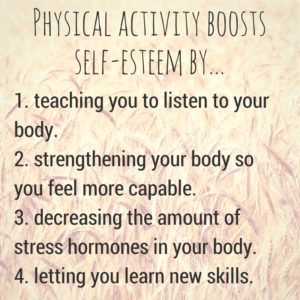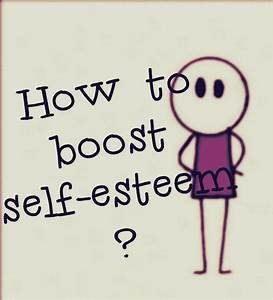One of the things that will hold you back from pursuing dreams for many years was fear of failure … and the lack of self-confidence that you need to overcome that fear.
It’s something we all face, to some degree, I think. The key question: how do you overcome that fear?
By working on your self-confidence and self-esteem. Without really thinking of it in those terms, that’s what I’ve been doing over the years, and that’s what helped me finally overcome my fears, and finally pursue my dreams.
You still may have those fears, undoubtedly. But now you must know that you can beat them, that you can break through that wall of fear and come out on the other side. I’ve done it many times now, and that success will fuel further success.
This post was inspired by reader Nick from Finland, who asked for an article about self-worth and self-confidence:
Many of the things you propose make people feel better about themselves and actually help building self-confidence. However, I would be interested on reading your input in general on this topic. Taking time out for your own plans and dreams, doing things another way than most other people and generally not necessarily “fitting in” can be quite hard with a low self-confidence.
Truer words have never been spoken. It’s near impossible to make time for your dreams, to break free from the traditional mold, and to truly be yourself, if you have low self-esteem and self-confidence.
As an aside, I know that some people make a strong distinction between self-esteem and self-confidence. In this article, I use them interchangeably, even if there is a subtle but perhaps important difference … the difference being whether you believe you’re worthy of respect from others (self-esteem) and whether you believe in yourself (self-confidence). In the end, both amount to the same thing, and in the end, the actions I mention below give a boost to both self-esteem and self-confidence.
Taking control of your self-confidence
If you are low in self-confidence, is it possible to do things that will change that? Is your self-confidence in your control?
While it may not seem so, if you are low in self-confidence, I strongly believe that you can do things to increase your self-confidence. It is not genetic, and you do not have to be reliant on others to increase your self-confidence. And if you believe that you are not very competent, not very smart, not very attractive, etc. … that can be changed.
You can become someone worthy of respect, and someone who can pursue what he or she wants despite the naysaying of others.
You can do this by taking control of your life, and taking control of your self-confidence. By taking concrete actions that improve your competence, your self-image, you can increase that self-confidence, without the help of anyone else.
Below, I outline 25 things that will help you do that. None of them is revolutionary, none of them will do it all by themselves. The list certainly isn’t comprehensive. These are just some of my favorite things, stuff that’s worked for me and others.
And you don’t need to do all of them, as if this were a recipe … pick and choose those that appeal to you, maybe just a couple at first, and give them a try. If they work, try others. If they don’t, try others.
Here they are, in no particular order:
1. Groom yourself. This seems like such an obvious one, but it’s amazing how much of a difference a shower and a shave can make in your feelings of self-confidence and for your self-image. There have been days when I turned my mood around completely with this one little thing.
2. Dress nicely. A corollary of the first item above … if you dress nicely, you’ll feel good about yourself. You’ll feel successful and presentable and ready to tackle the world. Now, dressing nicely means something different for everyone … it doesn’t necessarily mean wearing a $500 outfit, but could mean casual clothes that are nice looking and presentable.
3. Photoshop your self-image. Our self-image means so much to us, more than we often realize. We have a mental picture of ourselves, and it determines how confident we are in ourselves. But this picture isn’t fixed and immutable. You can change it. Use your mental Photoshopping skills, and work on your self-image. If it’s not a very good one, change it. Figure out why you see yourself that way, and find a way to fix it.
4. Think positive. One of the things I learned when I started running, about two years ago, what how to replace negative thoughts (see next item) with positive ones. How I can actually change my thoughts, and by doing so make great things happened. With this tiny little skill, I was able to train for and run a marathon within a year. It sounds so trite, so Norman Vincent Peale, but my goodness this works. Seriously. Try it if you haven’t.
5. Kill negative thoughts. Goes hand-in-hand with the above item, but it’s so important that I made it a separate item. You have to learn to be aware of your self-talk, the thoughts you have about yourself and what you’re doing. When I was running, sometimes my mind would start to say, “This is too hard. I want to stop and go watch TV.” Well, I soon learned to recognize this negative self-talk, and soon I learned a trick that changed everything in my life: I would imagine that a negative thought was a bug, and I would vigilantly be on the lookout for these bugs. When I caught one, I would stomp on it (mentally of course) and squash it. Kill it dead. Then replace it with a positive one. (“C’mon, I can do this! Only one mile left!”)
Know yourself and you will win all battles. – Sun Tzu
6. Get to know yourself. When going into battle, the wisest general learns to know his enemy very, very well. You can’t defeat the enemy without knowing him. And when you’re trying to overcome a negative self-image and replace it with self-confidence, your enemy is yourself. Get to know yourself well. Start listening to your thoughts. Start writing a journal about yourself, and about the thoughts you have about yourself, and analyzing why you have such negative thoughts. And then think about the good things about yourself, the things you can do well, the things you like. Start thinking about your limitations, and whether they’re real limitations or just ones you’ve allowed to be placed there, artificially. Dig deep within yourself, and you’ll come out (eventually) with even greater self-confidence.
7. Act positive. More than just thinking positive, you have to put it into action. Action, actually, is the key to developing self-confidence. It’s one thing to learn to think positive, but when you start acting on it, you change yourself, one action at a time. You are what you do, and so if you change what you do, you change what you are. Act in a positive way, take action instead of telling yourself you can’t, be positive. Talk to people in a positive way, put energy into your actions. You’ll soon start to notice a difference.


